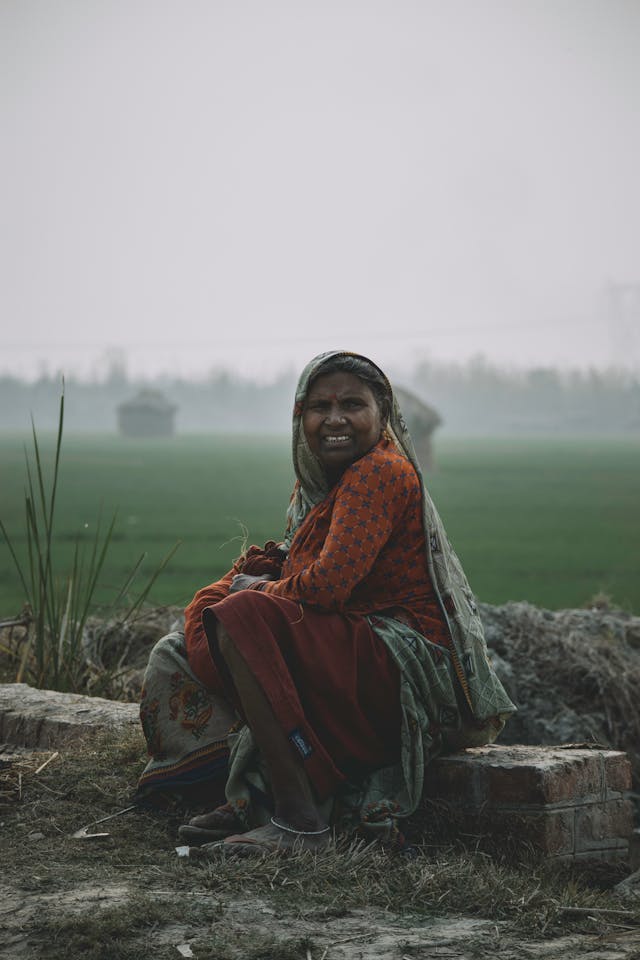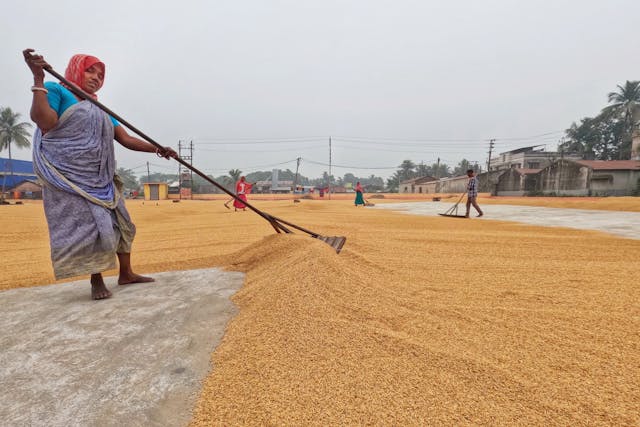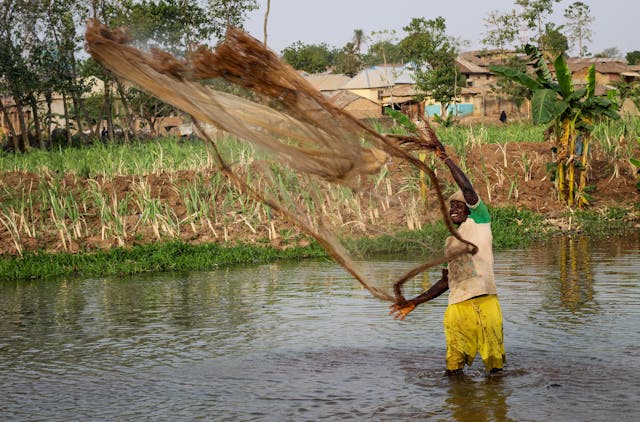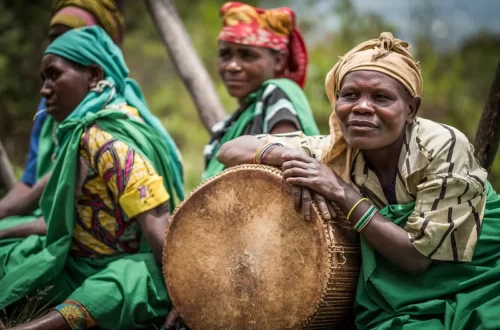
The Lifestyle of Indian Farmers in Villages
India, with its rich cultural heritage and vast agricultural landscape, is home to millions of farmers who form the backbone of the country’s agrarian economy. The lifestyle of Indian farmers in villages is a blend of age-old traditions and modern-day challenges. This blog delves into the various aspects of their lives, highlighting their daily routines, challenges, cultural practices, and the impact of modernization.
The Heart of Rural India

A Day in the Life of an Indian Farmers in Villages
A typical day for an Indian farmer begins at the crack of dawn. Early mornings are reserved for milking cows, feeding livestock, and preparing for the day’s work. After a simple breakfast, farmers head to their fields. The work is physically demanding, involving plowing, sowing, weeding, and harvesting, depending on the season.
Despite the hard work, there is a sense of fulfillment and connection to the land that sustains them. The fields are not just a source of livelihood but a testament to their heritage and resilience.

The Agricultural Calendar
Indian farmers’ lives revolve around the agricultural calendar, which is divided into two main seasons: Kharif and Rabi. Kharif crops, such as rice, maize, and millet, are sown with the onset of the monsoon in June and harvested in October. Rabi crops, including wheat, barley, and mustard, are sown in November and harvested in March.
This cyclical pattern dictates their routines, festivities, and financial planning. The success of these crops heavily depends on timely rains and favorable weather conditions, making farming a precarious occupation.
Experience a village life tour with us – Explore people’s culture & Habits
Cultural Practices and Traditions

Festivals and Celebrations
Indian farmers celebrate numerous festivals that are intricately linked to the agricultural cycle. Festivals like Pongal in Tamil Nadu, Makar Sankranti in North India, Baisakhi in Punjab, and Onam in Kerala mark the harvest season and are celebrated with great fervor. These festivals are not just religious observances but also a time for the community to come together, share meals, and express gratitude for a bountiful harvest.
Traditional Farming Methods
Many Indian farmers still rely on traditional farming methods passed down through generations. Techniques such as crop rotation, use of organic manure, and traditional irrigation methods are prevalent. These methods are often more sustainable and environmentally friendly, preserving soil fertility and biodiversity.
However, the reliance on traditional methods also poses challenges, as these techniques may not always yield sufficient produce to meet growing demands.
The Role of Women in Farming

Women’s Contribution
Women play a crucial role in Indian agriculture, often participating in almost all farming activities except plowing. They are involved in sowing, weeding, harvesting, and post-harvest processing. Additionally, women manage household chores, look after children, and often take care of livestock.
Challenges Faced by Women Farmers
Despite their significant contributions, women farmers face numerous challenges. They often have limited access to land ownership, credit, and agricultural training. Cultural norms and gender biases further restrict their participation in decision-making processes. Empowering women farmers through education, training, and access to resources is essential for the overall development of rural India.
Experience a village life tour with us – Explore people’s culture & Habits
Education and Health
Access to Education
Education in rural India has seen improvements, but challenges remain. Many village schools lack infrastructure, qualified teachers, and learning materials. Children of farmers often have to balance school with helping out in the fields, leading to high dropout rates. Efforts by the government and NGOs to improve rural education are ongoing, but there is still a long way to go.
Healthcare Challenges
Access to healthcare is another significant challenge for Indian farmers. Rural areas often lack adequate healthcare facilities, qualified doctors, and medical supplies. Farmers and their families rely on local healers and traditional medicine, which may not always be effective. The government’s initiatives to improve rural healthcare are crucial, but the implementation and reach need to be enhanced.
Economic Challenges

Financial Instability
Farming in India is fraught with financial risks. Farmers often face debt due to crop failures, low market prices, and high input costs. Many farmers rely on loans from local moneylenders with exorbitant interest rates, leading to a cycle of debt and poverty. Government schemes and subsidies aim to alleviate these issues, but the benefits do not always reach the intended recipients.
Market Access and Fair Prices
One of the significant challenges for Indian farmers is accessing markets and getting fair prices for their produce. The presence of middlemen and lack of direct market access often result in farmers receiving a fraction of the final selling price. Initiatives like Farmer Producer Organizations (FPOs) and direct-to-consumer models are being promoted to ensure better market access and fair pricing.
Impact of Modernization

Adoption of Technology
Modernization is gradually transforming Indian agriculture. The adoption of technology, such as advanced irrigation systems, high-yield seeds, and modern machinery, is increasing productivity. Mobile apps and online platforms are providing farmers with real-time information on weather, market prices, and best practices.
Government Initiatives
The Indian government has launched several initiatives to modernize agriculture and improve farmers’ livelihoods. Schemes like Pradhan Mantri Kisan Samman Nidhi (PM-KISAN), which provides direct income support, and Pradhan Mantri Fasal Bima Yojana (PMFBY), a crop insurance scheme, are steps in the right direction. However, effective implementation and ensuring that benefits reach the grassroots level remain challenges.
Education and Training
Educating farmers about modern agricultural practices, financial management, and market dynamics is crucial. Extension services and agricultural training programs are helping farmers adopt new techniques and improve productivity. Collaborative efforts between the government, educational institutions, and NGOs are essential to make these programs more effective.
Explore the simple living of rural life with us
Environmental Concerns
Climate Change
Climate change poses a significant threat to Indian agriculture. Erratic weather patterns, unpredictable monsoons, and extreme weather events like floods and droughts are becoming more common. Farmers are increasingly vulnerable to these changes, and adaptive measures such as drought-resistant crops, efficient water management, and sustainable farming practices are essential.
Sustainable Practices
Promoting sustainable farming practices is crucial for the long-term viability of agriculture. Techniques like organic farming, agroforestry, and conservation agriculture can help preserve the environment and improve soil health. Government policies and incentives to adopt sustainable practices can encourage farmers to shift towards more eco-friendly methods.
Social Structure and Community Life
Village Dynamics
Villages in India are close-knit communities where social interactions and mutual support play a vital role. The Panchayat system, a traditional form of local self-government, is still prevalent and helps in resolving disputes, managing resources, and making community decisions. Festivals, weddings, and other social events are celebrated collectively, reinforcing community bonds.
The Role of Cooperatives
Cooperatives play a significant role in the lives of Indian farmers. They provide a platform for collective bargaining, access to credit, and shared resources. Dairy cooperatives, for example, have been highly successful in states like Gujarat, improving farmers’ incomes and livelihoods.

The Future of Indian Farming
Youth Involvement
The younger generation in rural India is increasingly moving towards cities in search of better opportunities. Encouraging youth to engage in farming through education, training, and creating profitable and sustainable agricultural models is essential. Agripreneurship, or entrepreneurship in agriculture, is a growing trend that can attract young people back to farming.
Policy Reforms
Comprehensive policy reforms are needed to address the multifaceted challenges faced by Indian farmers. Ensuring access to credit, fair pricing, market access, and sustainable practices should be at the forefront of agricultural policies. Collaborative efforts between the government, private sector, and civil society can drive meaningful change.
Technological Integration
The integration of technology in agriculture holds immense potential. Precision farming, Internet of Things (IoT), artificial intelligence, and blockchain can revolutionize farming practices, improve efficiency, and ensure better market access. Providing farmers with the necessary tools and training to adopt these technologies is crucial.
Conclusion

The lifestyle of Indian farmers in villages is a blend of tradition, hard work, and resilience. While they face numerous challenges, including financial instability, lack of access to education and healthcare, and environmental concerns, there is also a sense of pride and connection to the land. Modernization, technological integration, and policy reforms hold the key to improving their livelihoods and ensuring sustainable agricultural practices.
Empowering farmers, especially women, and involving the younger generation in farming can pave the way for a brighter future for rural India. As we move forward, it is essential to recognize and support the invaluable contributions of Indian farmers, who are the true custodians of the nation’s agrarian heritage.




